Coconut, Coppertone, saltwater, freshly cut grass, and charcoal lumps smoking on the BBQ. These are some of the smells that reminded me of summer when I was growing up. And now as a gardener, tomato leaves make that happy list.
While there’s no shortage of Coppertone and BBQ on a hot summer day, the one smell that truly ushers in summer and closes it out is the heady, earthy, viney, fragrant aroma of fresh tomato leaves as you brush against them—either to trellis the vines in June or to pull up the last lingering plants in October.
Have you ever wondered where, exactly, that distinctive smell comes from?
It’s not in the fruit, no matter how richly perfumed that heirloom tomato variety may be. It’s only in the leaves, stems, and sepals (those little green “hats” on the flowers and fruits), and even on tiny seedlings that have barely seen the sun. It’s an unmistakable scent that no other plant shares, and people either love it or they hate it.
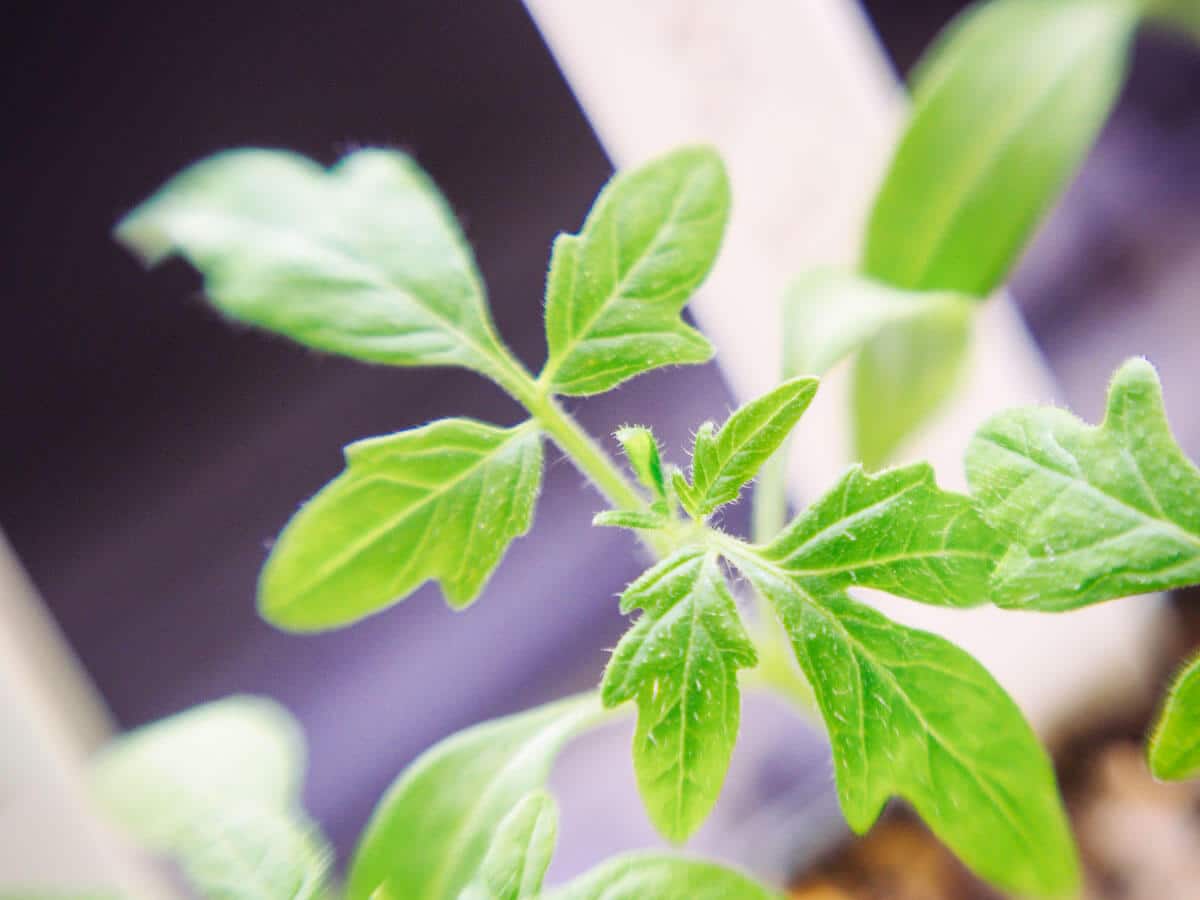
Disclosure: If you shop from my article or make a purchase through one of my links, I may receive commissions on some of the products I recommend.
Though I’m firmly in the “love it” camp, I have to wonder whether the makers of this $15 cologne went too far. (The fragrance is described as the “scent that tomato leaves leave on your hands.”)
But if you’re not the cologne type, there’s always this soy candle (that comes in a plantable box!) marketed as a “picked-fresh-from-the-vine fragrant experience.”
But I digress. How and why do tomato leaves have that unique smell?
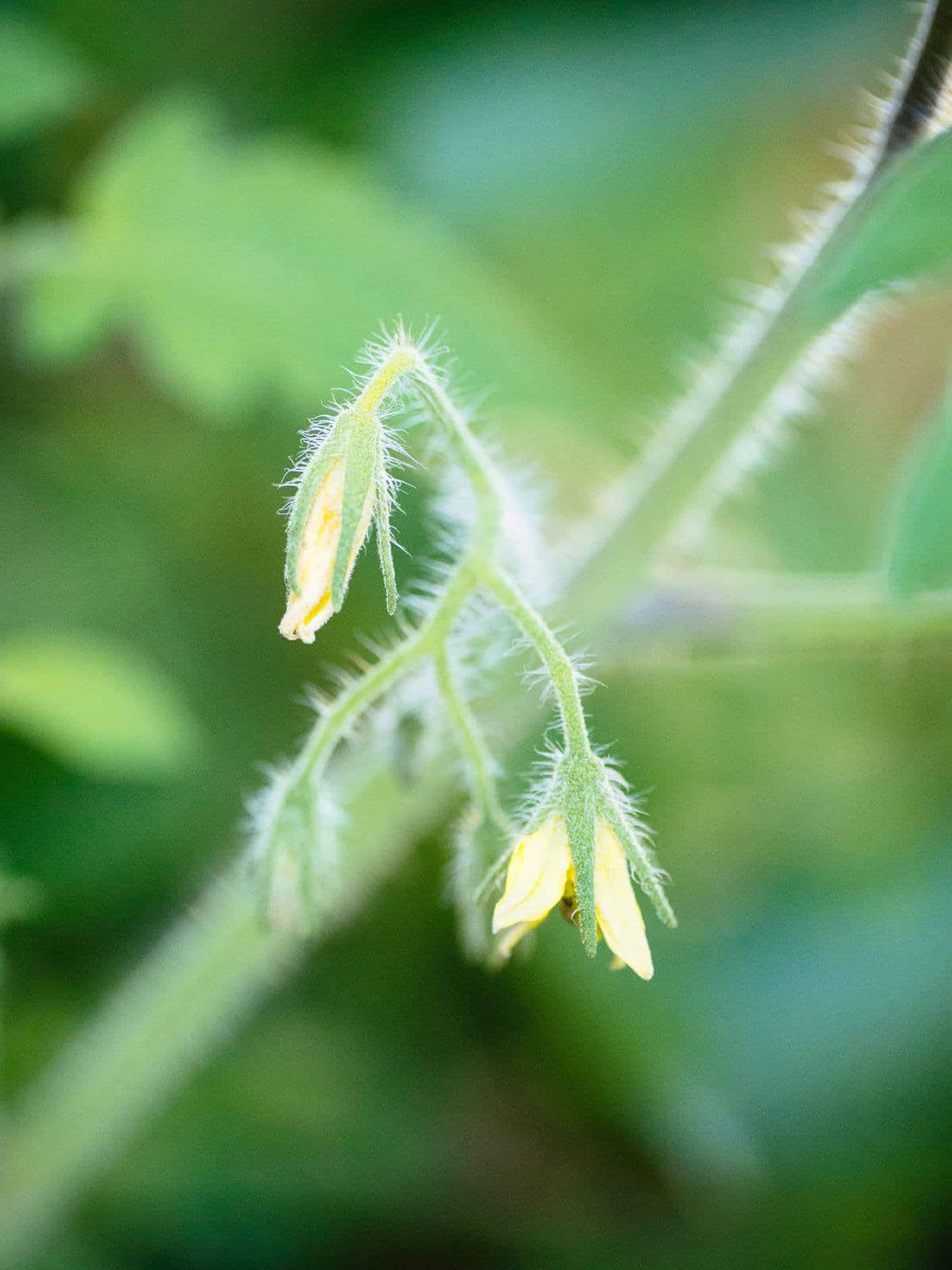
If you examine a tomato plant up close, you may notice that the foliage is covered in short, fine, hair-like structures. These hairs (what I affectionately dub tomato fuzz) are known as trichomes, and they serve a variety of functions and exist on many other plants as well.
On a tomato plant, several types of trichomes are found on the stems, leaves, and sepals.
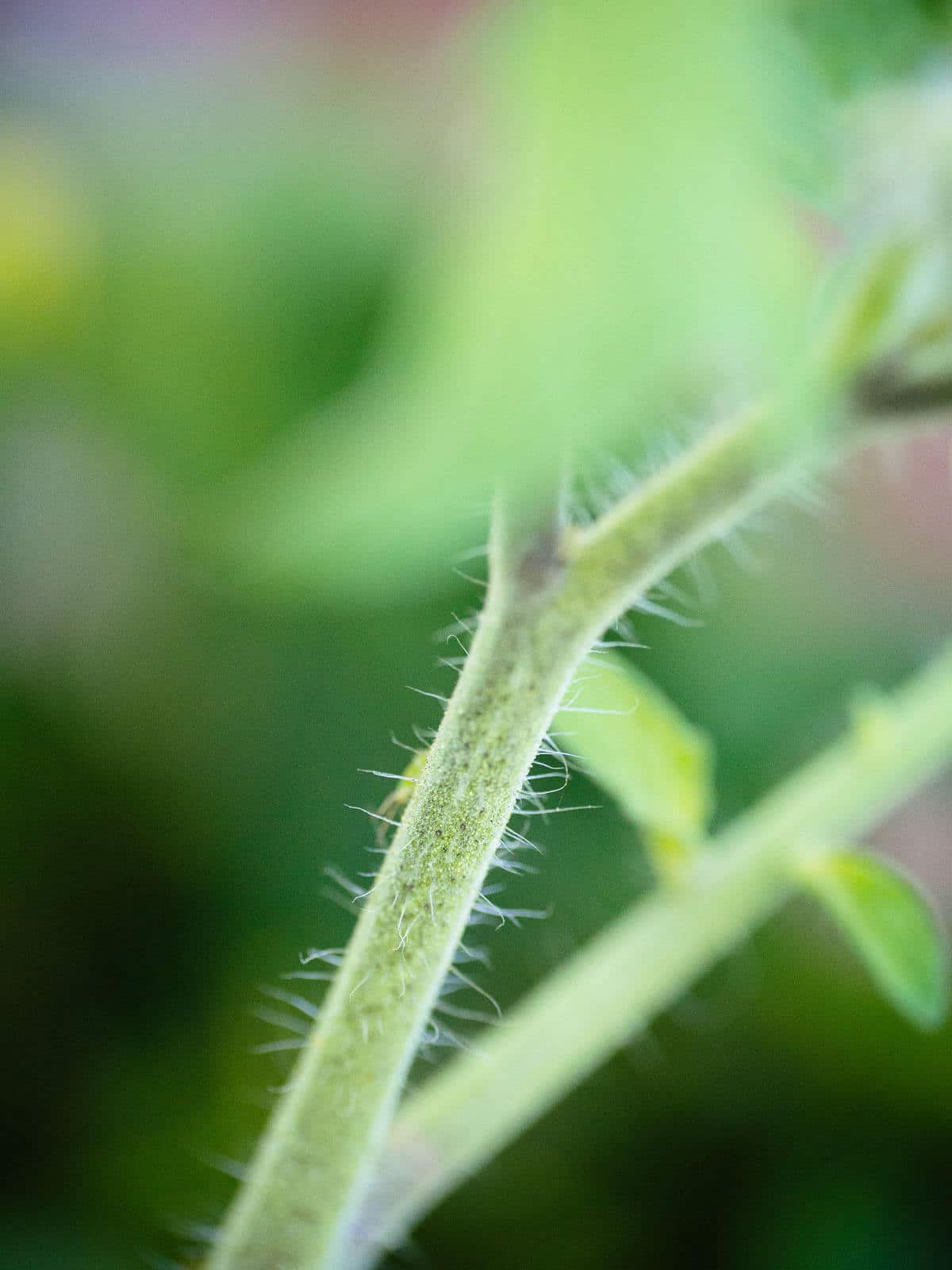
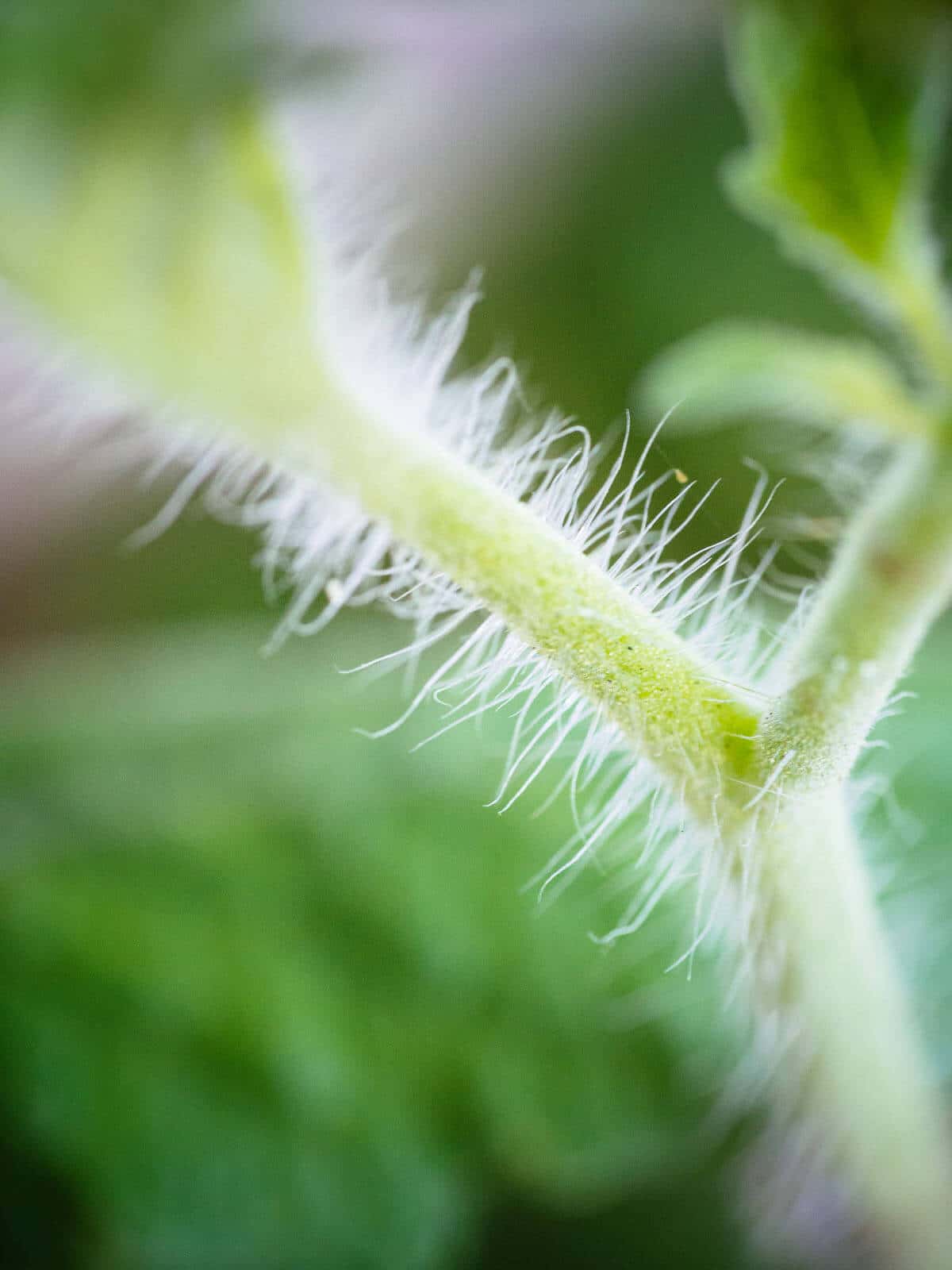
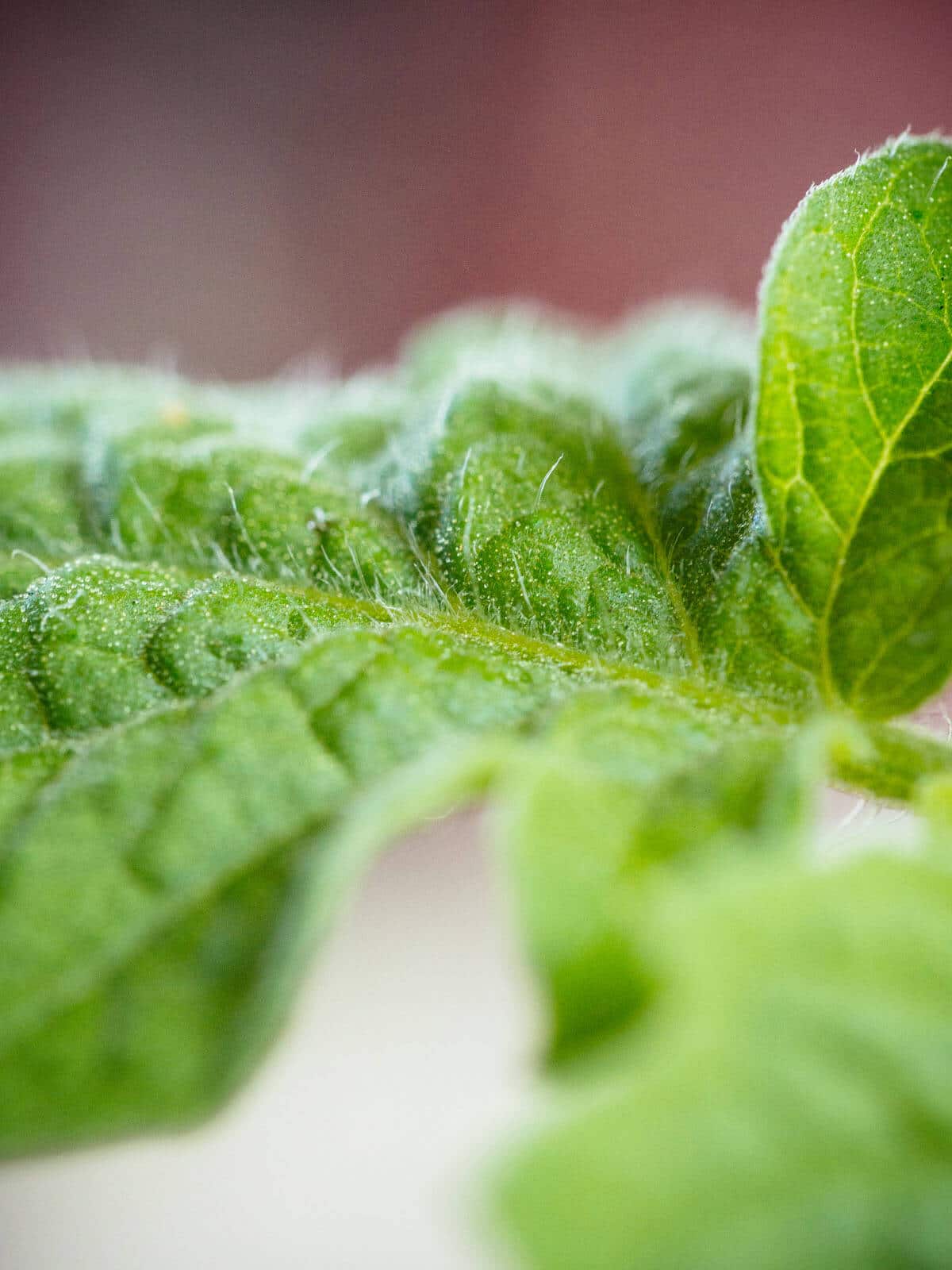
One type works to reduce evaporation of water by trapping moisture on the surface of the leaf. Another helps shield the plant against environmental stresses like extreme temperatures, and yet another type (glandular trichomes) contains crystals and oils in the bulbous section of the structures, seen here on the ends.

It’s believed that these crystals and oils are part of the plant’s defense mechanisms. They produce an unpleasant feel, taste, and smell meant to protect the plant from insects that might feed on its foliage.
It’s a little ironic that what might be considered “unpleasant” by pests can in fact be so intoxicating to the rest of us!
The essential oils are responsible for giving the tomato plant its characteristic smell, as well as the sticky yellow secretion you’ve probably had all over your hands after a day of harvesting tomatoes.
(As an aside, you might remember this post about whether or not tomato leaves are poisonous, where I wrote about a glycoalkaloid called tomatine that’s present in tomato leaves. Tomatine is stored in the glandular trichomes as well.)
Within the oils, the volatile compounds that contribute most to tomato leaf scent are (Z)-3-hexenal, limonene, hexanal, (E)-2-hexenal, eugenol, 1,8-cineole, caryophyllene, beta-phellandrene, humulene, and linalool.
These compounds, collectively, are exclusive to tomato trichomes—which is why no other plant smells like it.
If you want to add a distinctively tomatoey flavor to your tomato sauce or tomato soup, simply steep a few sprigs of tomato leaves in the pot the same way you would steep some bay leaves.
As the trichomes burst and release their oils, the herbal aroma will infuse your dish with a deeper layer of flavor that can only be described as… summer!

Want tomato leaf recipes?
I share my favorites in my book, The No-Waste Vegetable Cookbook, which helps you harvest, cook, and eat not only tomato leaves, but other delicious plants from your garden like squash leaves, pea shoots, and sweet potato vines.
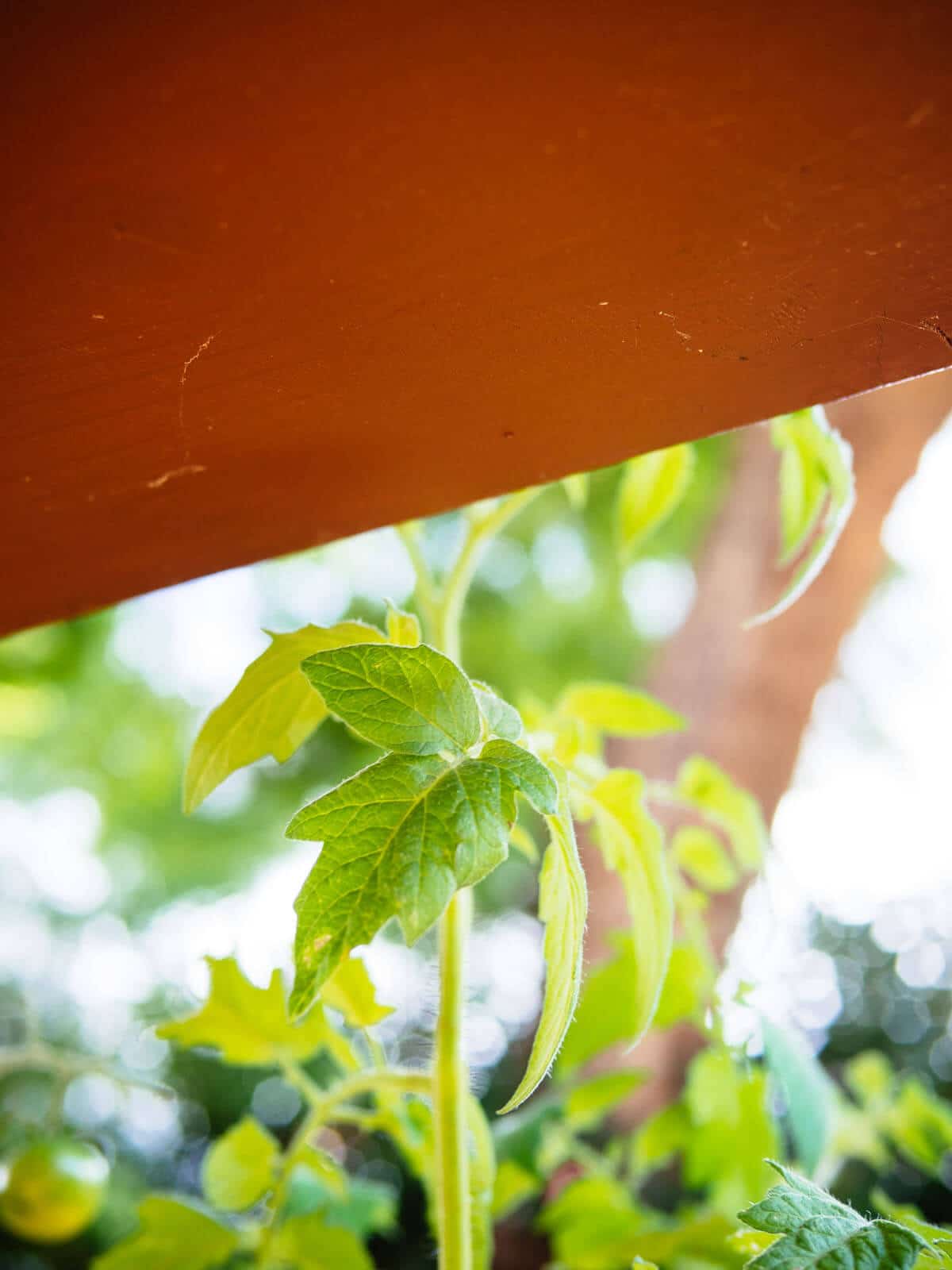
This post updated from an article that originally appeared on September 17, 2015.
View Web Story on the smell of tomato leaves.


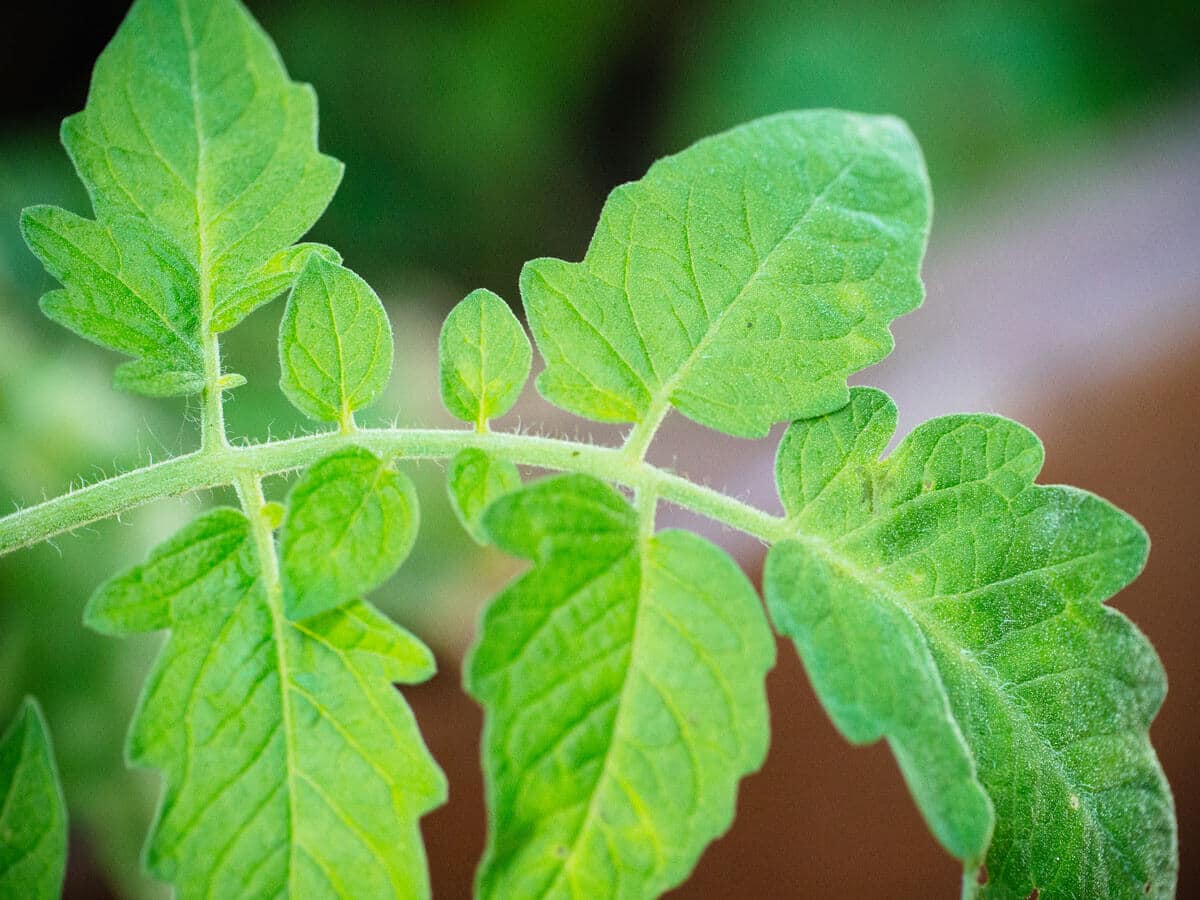













I have a tomato plant that sprouted in our front yard right by our front door. Every night and morning we are smelling what I could compare to a “skunk” smell and I started wondering if it might not be the tomato plant! Our garden is in the back, and this tomato plant had to have grown because of tomatoes we threw in the garbage and unfortunately had the bags ripped open before we acquired the heavy duty trash can we have now. I noticed someone said a cannabis smell, and it is similar though much stronger! Was wondering if the plants smell could be strong enough to be the culprit?
I’ve never thought my tomatoes had a skunky smell, could it be possible that there IS a skunk roaming around in your garden?! Though I suppose everyone’s olfactory senses are different enough to register different compounds in this complex scent.
I’m kind of late to this discussion but I wanted to add something interesting. If you ever grow Sungold cherry tomatoes (and I recommend you do!) you’ll find they have a slightly different leaf smell than other toms. Some people, not me, don’t like the Sungold smell, it almost has a cannabis leaf aroma, Take care!
Interesting! I’ve only grown Sungold once, but I understand there are a few variations (heirloom and hybrid) and I don’t remember it ever smelling like a cannabis leaf. Now I’m curious to try it again!
Gosh that tomato smell is so evocative – it takes me back through time in a nano second, to my grandfather’s greenhouse
I love the smell, but many others that I have over do not – and I’m growing my tomatoes in a downtown loft that only has one room! So let’s just say that some people have decided they’d rather hang out with me outside of my place rather than inside. Oh well…their loss 😉
LOL!
My dog loves that smell. She is an A1 tomato hunter (thief) when the plants start smelling ‘tomatoey’. She can’t see them when they are green (bc dogs are color blind) but when they get ripe and smell fruity on their own I have to harvest a day or three early and ripen on a shelf. She’s a 15 yr old golden- she can do what she wants.
LOL! One of my pugs is quite the omnivore as well. She used to wander the garden and snack the low-hanging fruit off my tomato plants! Now that she’s no longer mobile, I’ll feed her a few cherry toms as a treat. The things we do for our babies. 🙂
RT @theGardenBetty: Why does the foliage smell so different from the fruit? Smells of Summer: Fresh, Fragrant Tomato Leaves http://t.co/3QI…
Why does the foliage smell so different from the fruit? Smells of Summer: Fresh, Fragrant Tomato Leaves http://t.co/3QIoLpdDsY #gardenchat
I love the smell, it reminds me of summers in my grandparents’ garden.
The distinctive aroma come from oils in the foliage. Smells of Summer: Fresh, Fragrant Tomato Leaves http://t.co/2qBlFexBqX #gardenchat
Trichomes give stems and leaves that intoxicating scent. Smells of Summer: Fresh, Fragrant Tomato Leaves http://t.co/qzTnTGW3EH #gardening
Digging deeper into tomato anatomy and that unique scent. Smells of Summer: Fresh, Fragrant Tomato Leaves http://t.co/NRtrG1C6PB #gardenchat
Sara Thomas liked this on Facebook.
Ning Thanasorn liked this on Facebook.
Randall S. Winkler liked this on Facebook.
Smells of Summer: Fresh, Fragrant Tomato Leaves http://t.co/iqaPr9F93G via @theGardenBetty
Lindsey Dougherty liked this on Facebook.
Dorothy Sides Frederick liked this on Facebook.
Plantasy liked this on Facebook.
Vicki – As I was just saying…..
Very interesting. Thanks for sharing.
Way cool. And it makes yer fingers green too! I like making a tomato leaf spray to keep away bad bugs…works great!
Yellow, green, and sometimes even black if you really get a lot of that tomato “tar” on your hands… it all comes from the essential oils in the foliage!
Interesting part about steeping the leaves to bolden the flavor.
I often do this with homemade sauces, especially if I’m using canned tomatoes or tomatoes that aren’t fully ripe yet.
Mallory L. N. Johnson liked this on Facebook.
It’s an unmistakable scent that no other plant shares. Smells of Summer: Fresh, Fragrant Tomato Leaves http://t.co/vamOgdQnjx #gardenchat
That’s a whole lot of intricate details about the lovely plant…the sent reminds me of my grandmother and her patch of land. I will have to try the leaves in a dish…thanks for the idea!
Enjoy!
David Miccinello liked this on Facebook.
Steep #tomato leaves into your next sauce for an added level of flavour <- genius #cooking tip! http://t.co/40qctmPUtD via @theGardenBetty
Kimberley Robertson liked this on Facebook.
Francine Mastini liked this on Facebook.
Lisa Steele liked this on Facebook.
Nicole Bond liked this on Facebook.
Beverly Osborn liked this on Facebook.
Lydia Ann liked this on Facebook.
Maybe this is just an old wives’ tale, but I thought tomato leaves were poisonous? Is it not dangerous to add them to food? Because otherwise that sounds amazing!!
They used to think that tomatoes were poisonous, maybe that’s why you recall it. Tomatoes are a nightshade and tend to trigger toxins and create inflammation like other nightshades but I can’t resist a juicy off the vine tomato!
I eat my weight in fresh tomatoes! I was just wondering about the leaves 🙂
Not poisonous! 🙂 I cover that myth in more detail here: http://gardenbetty.com/2013/08/tomato-leaves-the-toxic-myth/
I also have a couple of recipes that use tomato leaves in my book, The CSA Cookbook: http://www.thecsacookbook.com
Very cool! Thanks for the info.
Excellent research and point of view!! Thanks Garden Betty!
Plus, I’ve always loved the smell of my tomato plants while I garden. This is great!
Melissa Serviss Unkle liked this on Facebook.
Maddalena Cantoni liked this on Facebook.
Carolyn Harvey liked this on Facebook.
Laurie Smith liked this on Facebook.
when cropping tomatoes I start being careful not to be covered with green but after a while I surrender and at the end I feel I’m a vegetable
Blogged on Garden Betty: Smells of Summer: Fresh, Fragrant Tomato Leaves http://t.co/5GFx9s4KeZ